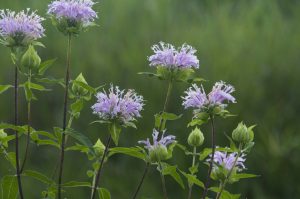Buy Local
 It seems like everybody today is reminding us to BUY LOCAL. It helps to stimulate the local economy and provide jobs for your neighbors, and those are really important.
It seems like everybody today is reminding us to BUY LOCAL. It helps to stimulate the local economy and provide jobs for your neighbors, and those are really important.
However, when you are planning a habitat restoration project, buying local is doubly important. Chances are the discount superstore or home improvement megastore near you has cheap “wildflower” seed for sale. When you see them — walk away! These mixes contain seeds that may be native to someplace, but chances it isn’t where you live. In many cases, they actually contain species that are invasive and can create brand new problems you never expected.
As you will hear me say many times, the first step is to who you are and what you value regarding your land, what Aldo Leopold called the “land ethic.” With that as your guide, you can set goals for various parts of your property, creating projects with objectives that come together to form an overall plan. Take plenty of time to plan what species you want to plant. Remember, native seed is very expensive but dreaming and scheming is free.
Next, is selecting the plants that fit into the plan for that project. Native plants live and thrive in plant communities that are based on such things as the soil typed moisture, slope of the land even the direction that the slope faces. The Natural Communities of Wisconsin describes each of these communities in pretty careful detail. It also contains a list of the typical plants that do well in each community. Figure out what type of natural community you want to restore and select plants that are suited to it.
Finally, find a native nursery that sells seeds, plants and nursery stock that are locally grown from cultivars that were collected nearby. Ask the nursery whether what they are selling you came from plants that were originally collected in the area. If your land is in Richland Center, you do not want to buy seed from plants that originated somewhere in Nebraska, or visa versa. Wisconsin landowners will want to check out the Native Plant Nurseries in Wisconsin publication from the Wisconsin DNR.
Remember, that it can take three, four, five years or even longer before some of the seeds you plant sprout and then mature to the point where they are producing flowers and seed. Be patient and watch for future posts about how and when to plant.
